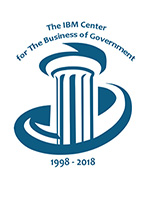
An Obligation to Future Generations

Change is everywhere. Every industry, including government, is facing digital disruption. The public expects the agility and efficiency found in the private sector while government must appeal to new workers with skills to meet these requirements. Advances in technology have accelerated the need for change in how governments operate.
Fortunately, governments have embraced analytic tools to better glean insight from the vast amounts of data that they now accumulate. By leveraging automation to deliver repetitive tasks with greater consistency and speed, many back-office processes can be re-imagined. As technologies mature, every government process will be re-examined and re-architected.
Enabled by artificial intelligence (AI) and cognitive computing, government experts will find more time to focus on activities where human judgement and experience has greater impact. AI and cognitive computing-enabled tools can make filing taxes faster, easier and with more precise results. Access to important personal identification documents like birth certificates and driver’s licenses will become a customized interactive task.
Network technologies such as blockchain, that enhance the security of online records, will redefine many core government functions such as global trade, customs and visa processing, rendering them more trustworthy and efficient. Once a record is added to the blockchain, it is permanent and difficult to tamper with. The Internet of Things (IoT), that infuses devices with the ability to communicate status information to other systems to evaluate and act on it, will increasingly help run integrated cities.
The costs of change
Efficient business processes can leave more cash flow to funnel toward growth, transformation and sustained lower operational costs elsewhere in the organization. In the future, tasks will be delivered with more seamless integration between agencies that deliver services. Long-term contractual arrangements between a federal, state or local agency and a private sector entity— a public- private partnership or PPP — were the talk of the industry of government a decade ago. The skills and assets of a government entity and a private party were shared to deliver a service for the use of the public. Aided by technology, a new kind of PPP can emerge, a model where the partner embraces technology to deliver productivity gains and simplify core processes. Governments will continue to work with a network of ecosystem partners to deliver specific services, where roles are defined in a more agile and iterative fashion.
Radical and long-term change is not without its challenges. To strive for what may seem implausible, government leaders must choose to:
- Seek champions of transformation in and across agencies. The right candidates are forward thinkers who influence and make change happen. In the absence of such champions, agencies will need to continue taking an incremental, project-based approach to technology adoption. The longer this approach is taken, the greater the gap becomes between “business as usual” and optimal outcomes.
- Revisit how governments engage with industry. Although risks are appraised to determine project feasibility and address expectations, PPP contracts typically cost more. The private party must take on a significant portion of the risk since how much it receives for participation depends on performance. To unleash the full potential of new digital technologies, it is time to rethink value and engagement.
- Evolve legacy technologies. Many government agencies suffer from aging infrastructure and applications as part of their enterprise architecture. IT departments waste time and resources to simply “keep the lights on.” A better balance between transformation and operations in terms of budget, talent and effort must be found.
- Champion organizational and process changes. Question existing silos, work flows and decision trees to deliver tangible and lasting benefits.
The people of future government
People have the greatest impact on the future of government, starting with the aging workforce. Over the next decade, there will be an exodus of knowledge from government departments and the need for new employees who can learn the agency mission and move up into leadership roles.
To help close the gap, government leaders should engage Millennial employees in transformation efforts. Referred to as “digital natives,” Millennials (born after 1980) represent the largest demographic group in history and by 2025, may make up 75 percent of the workforce. Millennials offer the skills and perspectives that can help reimagine government for the digital era. With the internet age a part of their childhood upbringing, Millennials view the work experience differently. Should young professionals gravitate toward the reinvention and evolution of one of the oldest industries, they will bring with it fresh perspectives and technological prowess, along with a renewed purpose to create lasting change.
Millennials aren’t the only group ready to lead by their technical needs and expectations. The future government must also align to an emerging citizen’s mantra to provide information and services when, where and how they want it. Today’s citizens are seeking the same conveniences they’ve become used to in their experience as consumers, for example improved efficiency and optimized interactions across mobile, social and web.
Inaction is no longer an option
Progressive leaders embrace change, and new thinkers must proliferate to move innovation ahead and set the pace for those who follow to create a culture that transcends existing power bases and silos. These leaders will help build an environment where more businesses can achieve and succeed, and where compelling experiences meet citizens at every touch point. One can anticipate a long journey to get there. But by embracing digital technologies and creating an architecture that covers function, process, organization and technology, governments will be better able to deliver on their obligation to future generations.



